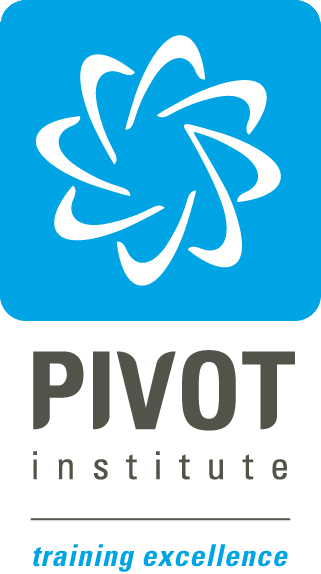Persuasion is generally an exercise in creating a win-win situation. You present a case that others find beneficial to agree with. You make them an offer they can’t refuse, but not in the manipulative Godfather sense. It’s simply a good deal or a position that makes sense to that particular person.
There are techniques that can make your job easier and your case more compelling. While this list is in no way comprehensive, these 10 persuasive writing strategies are used quite a bit because they work.
Talk to anyone well versed in learning psychology, and they’ll tell you repetition is crucial. It’s also critical in persuasive writing, since a person can’t agree with you if they don’t truly get what you’re saying.
This is a principle used in training, because repetition aids retention of information. If you want someone to remember something – repeat it. If you want someone to remember something – repeat it. The benefits of repetition are shown below:
Of course, there’s good repetition and bad. To stay on the good side, make your point in several different ways, such as directly, using an example, in a story, via a quote from a famous person, and once more in your summary.
Remember the power of the word “because”. Psychological studies have shown that people are more likely to comply with a request if you simply give them a reason why… even if that reason makes no sense.
When you use this technique, remember the principles of business writing in section two – put your conclusion first. Give the audience the answer to your problems and then convince them of why that is the best solution. This way, your audience can get the feeling that they have made the decision and they have ownership of the plan, even though it’s been your plan all along.
Consistency in our thoughts and actions is a valued social trait. We don’t want to appear inconsistent, since, whether fair or not, that characteristic is associated with instability and flightiness, while consistency is associated with integrity and rational behaviour.
Use this in your writing by getting the reader to agree with something up front that most people would have a hard time disagreeing with. Then rigorously make your case, with plenty of supporting evidence, all while relating your ultimate point back to the opening scenario that’s already been accepted.
Importantly, ensure that your work doesn’t chop and change. Even a slight difference of viewpoint on the important message of your document will muddy the waters and confuse your reader. Consistency is consistent with repetition – the two strategies work hand in hand.
Looking for guidance from others as to what to do and what to accept is one of the most powerful psychological forces in our lives.
It can determine whether we deliver aid to a person in need, and it can determine whether we muster the courage to take a risk.
Obvious examples of social proof can be found in testimonials and outside referrals, and it’s the driving force behind social media. But you can also casually integrate elements of social proof in your writing, ranging from skilful alignment with outside authorities to blatant name dropping. You are trying to convince your audience that if your idea is good enough for someone else, then it’s definitely good enough for them. This will be especially true is the “someone else” is a widely known and well respected person or organisation.
Metaphors, similes and analogies are the persuasive writer’s best friends. When you can relate your idea to something that the reader already accepts as true, you’re well on your way to convincing someone to see things your way. This technique also demonstrates consistency.
But comparisons work in other ways too. Sometimes you can be more persuasive by comparing apples to oranges. Rather compare the price of your home study course to the price of a similar course, compare it to the price of a live seminar or your hourly consulting rate.
Strategy 6: Agitate and Solve
|
This is a persuasion theme that works as an overall approach to making your case. First, you identify the problem and qualify your audience.
Then you agitate the reader’s pain before offering your solution as the answer that will make it all better.
The agitation phase is not about being sadistic; it’s about empathy. You want the reader to know unequivocally that you understand their problem because you’ve dealt with it before and are experienced at eliminating it. The credibility of your solution increases significantly if you demonstrate that you truly feel the prospect’s pain.
Strategy 7: Prognosticate
|
Another persuasion theme involves providing your readers with a glimpse into the future. If you can convincingly present an extrapolation of current events into likely future outcomes, you are doing well.
This is a technique used very well by OH&S professionals. They present the risk without their plan and then show the significantly reduced risk if the audience accepts their ideas.
This entire strategy is built on credibility. If you have no idea what you’re talking about, you’ll end up looking foolish. But if you can back up your claims with your credentials or your obvious grasp of the subject matter, this is an extremely persuasive technique.
Despite our attempts to be sophisticated, evolved beings, we humans are exclusionary by nature. Give someone a chance to be a part of a group that they want to be in—whether that be wealthy, or hip, or green, or even contrarian—and they’ll hop on board whatever train you’re driving.
At its very base level, this is what drives people to join organisations that they might never normally join. Cults, political groups, clubs and companies all exist because of the need for belonging that is felt by humans. We are essentially just well-developed pack animals. Find out what group people want to be in, and offer them an invitation to join you in preference to others.
Strategy 9: Address Objectives
|
If you present your case and someone is left thinking “yeah, but…” you’ve lost. This is why direct marketers use long copy—it’s not that they want you to read it all, it’s that they want you to read enough until you buy.
This is also part of the reason why FAQ sections exist on many websites. Providing the answers to the questions of doubters is a technique to win over those doubters.
Addressing all the potential objections of at least the majority of your readers can be tough, but if you really know your subject the arguments against you should be fairly obvious. If you think there are no reasonable objections to your position, you’re in for a shock!
Storytelling is really a catch-all technique—you can and should use it in combination with any and all of the previous nine strategies. But the reason why storytelling works so well lies at the heart of what persuasion really is.
Stories allow people to persuade themselves, and that’s what it’s really all about. You might say that we never convince anyone of anything—we simply help others independently decide that we’re right. Do everything you can to tell better stories, and you’ll find that you are a very persuasive person.
This context has been abstracted from one of The Pivot Institute’s popular program Fundamentals of Management.
Copyright of The Pivot Institute 2014





